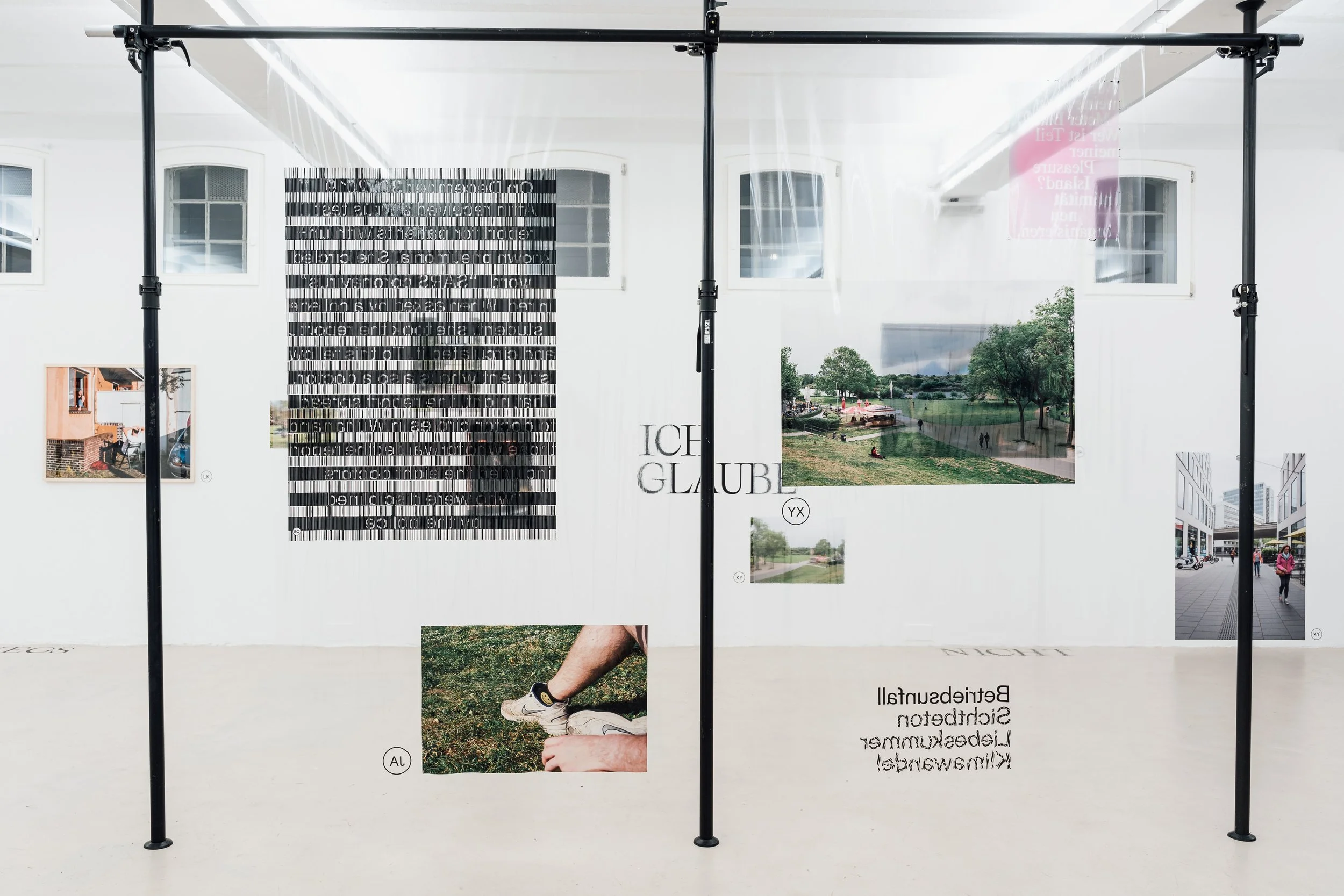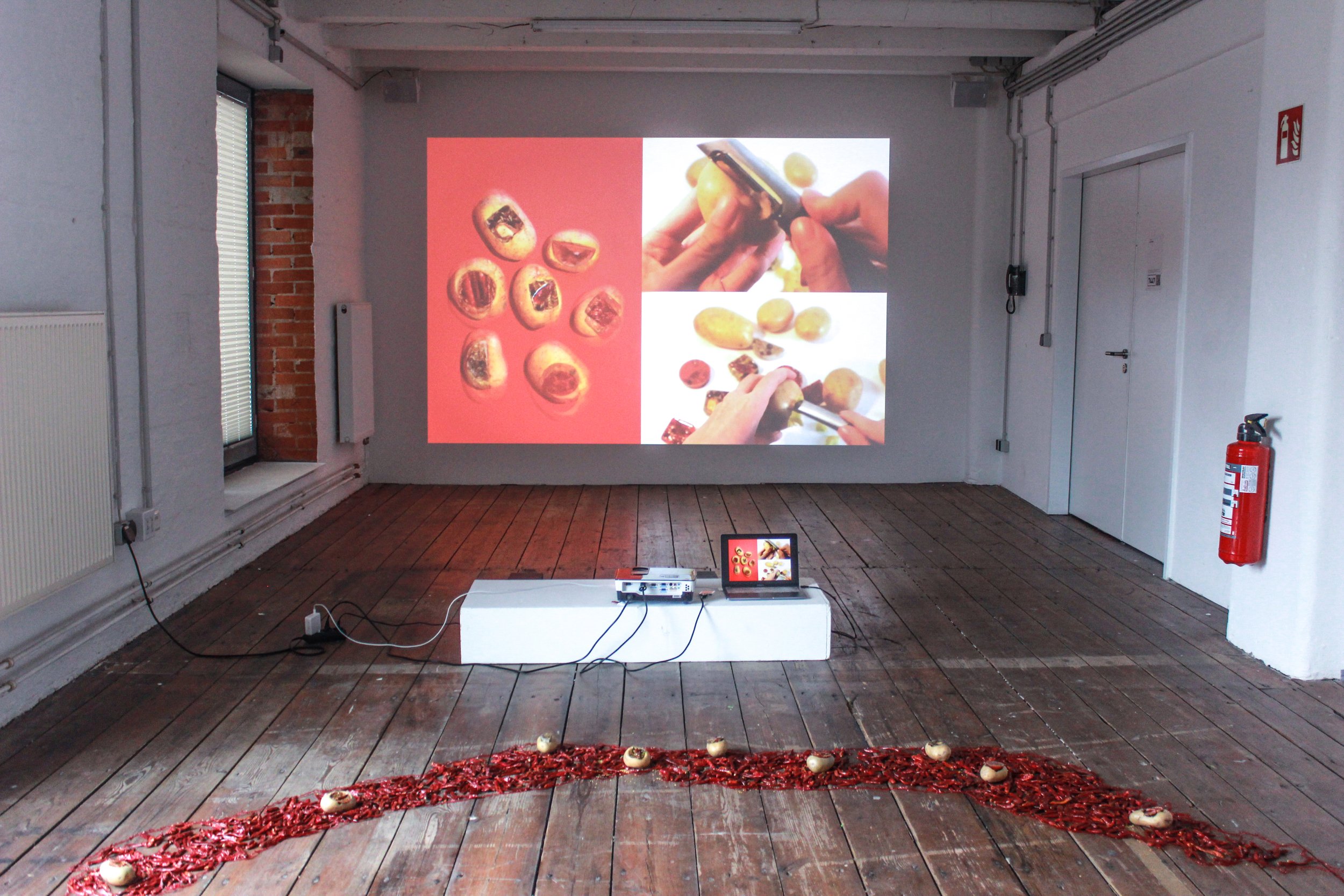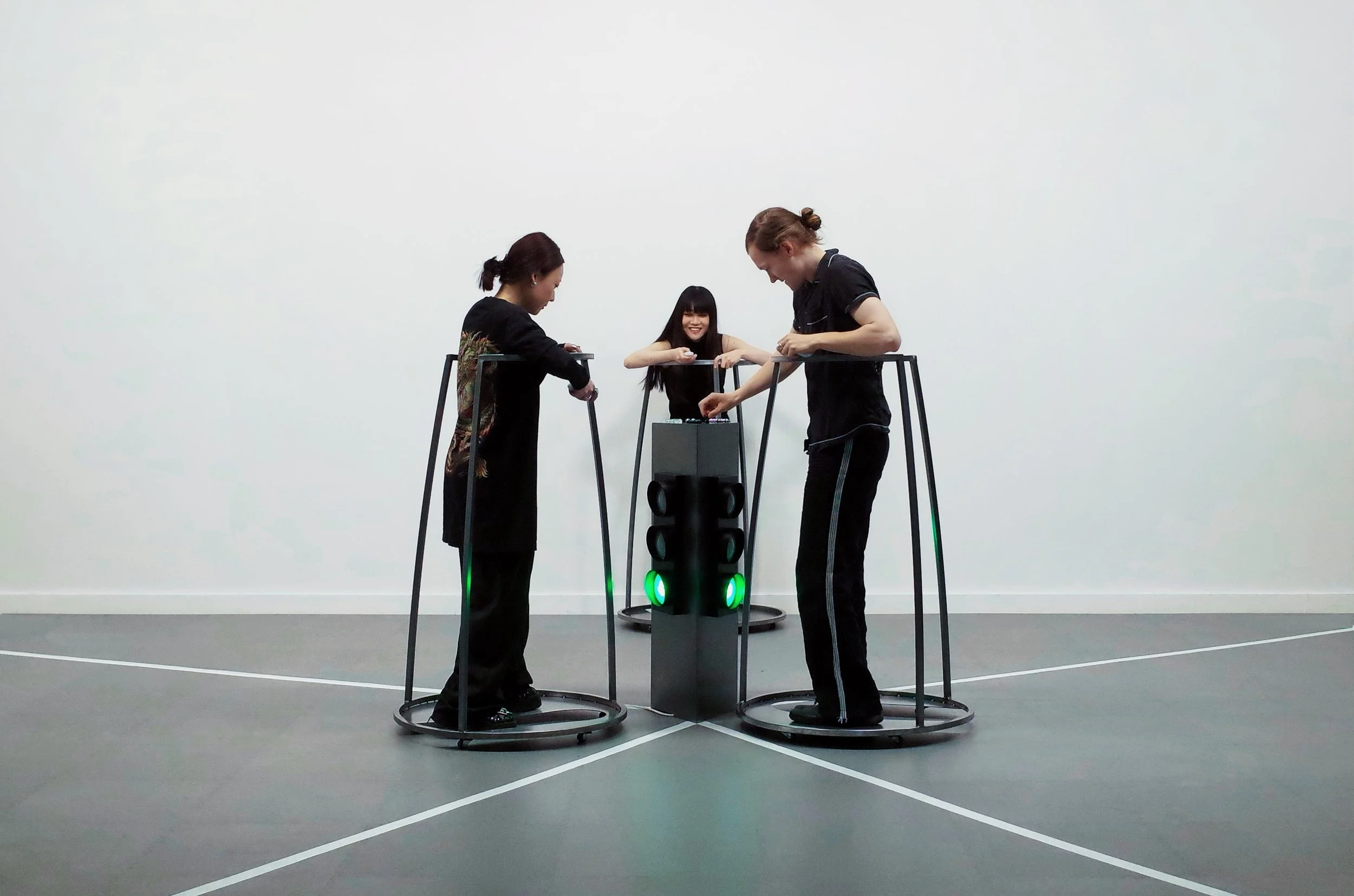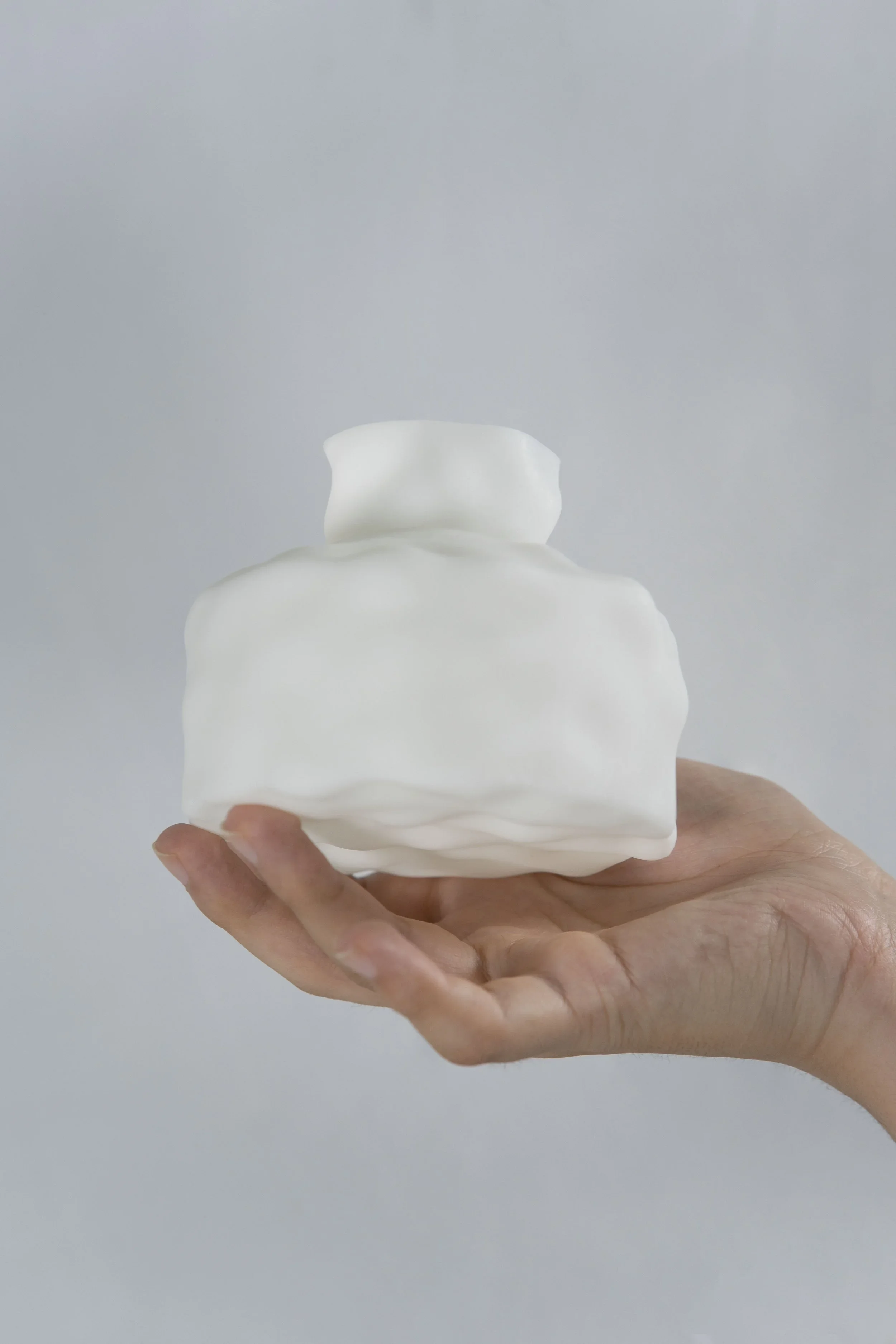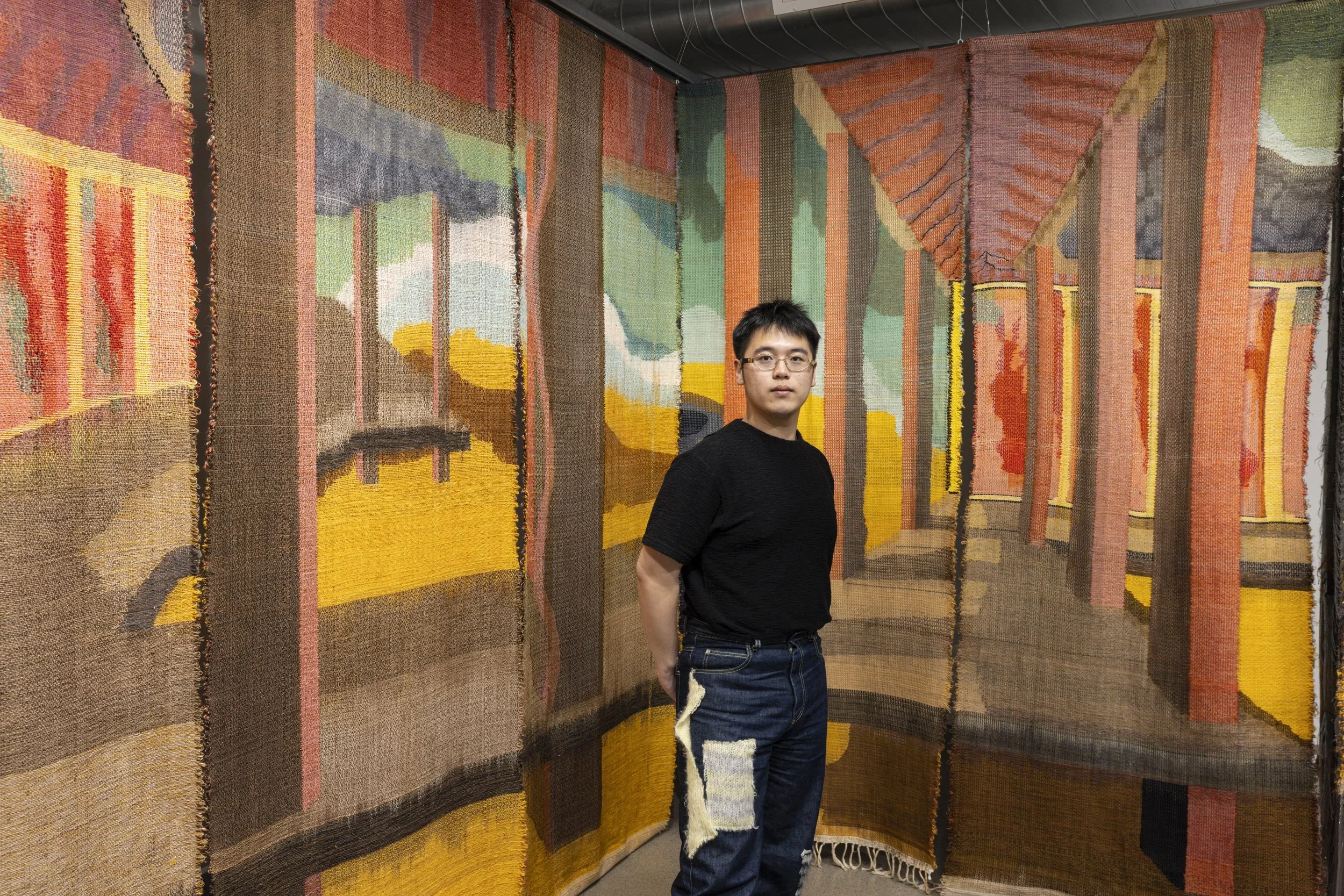10 Questions with Qiao Ban
Qiao Ban, who comes from China, is currently based in Berlin, Germany. She gained her master's degree in Art and Design from the Bremen Academy of Art, and after graduation, Qiao Ban has been working as a freelance artist and graphic designer in Berlin.
Before coming to Germany, she primarily focused on social issues in China and created critical designs related to topics such as the one-child policy. Initially, few women in China discussed their rights, but in recent years, questioning of women's rights has gradually increased. Qiao Ban's project focuses on the state's dominant "discourse" on family planning. Using Jiang Yong's women's script, which only women can understand, Qiao Ban printed on silk fabric, a material typically associated with women's clothing, the words from the one-child policy parent's "Certificate of Honor" written in women's script. Before 2016, the parents of the one-child policy received a red "Certificate of Honor."
Upon arriving in Germany, Qiao Ban shifted her focus to observing social issues in Germany through the perspective of a foreigner. For example, she noticed that people with tattoos on their arms have difficulty finding jobs within the system due to a first impression and stereotyping. Tattoos have become a limitation on personal development. Qiao Ban combined this with the Berlin subway ticket, which has a two-hour time limit. From the moment you "check in," your range of activities and time is restricted. This confinement on passengers is similar to the limitation on individuals with tattoos.
Qiao Ban - Portrait
In 2020, Qiao Ban created a series of works related to depression. Depression is the most common mental illness in the world, but it still does not receive enough attention. Many people who are depressed hope to seek help from those around them, but due to the nature of the illness, it is difficult to ask for help. Unbeknownst to her friend, Qiao Ban recorded their year-long conversations. It wasn't until her friend admitted her condition that Qiao Ban discovered some phrases and words that hinted at depression in their chats. Qiao Ban then used resin material to create a pill-shaped artwork to present the theme of depression and why the understanding of it is limited to just sadness rather than a lack of vitality. Qiao Ban also used table soccer, which represents energy, to express the intensity of daily hints of depression in every sentence related to depression throughout the day.
Her master's thesis was about a sense of belonging and her perspectives on life in a familiar country and an unfamiliar one. She comes from China, a country with a long-standing collective culture where all members of a group are expected to harmonize. As a member of a group, she was defined by the group's characteristics and controlled by unknown factors. After leaving the collective, her behavior changed, but she did not fall completely behind.
So, who is Qiao Ban?
If the basic motivation of all individuals is to define themselves by "belonging" to the human community, which group does she belong to, and how does she determine her "belonging"? How does she find her identity?
She believes that self-identity is fluid, like a seemingly still flowing river, but in reality, the water is different every moment.
She hopes her work is open and interactive, without a definite answer, just like her thesis. The result is a visual reflection of images, text, and materials and an exhibition of art.
Feminism and China‘s One-Child Policy, Silk cloth, 1x1 m, 2018 © Qiao Ban
INTERVIEW
First of all, introduce yourself to our readers. How would you define yourself as an artist? And what makes you unique?
My name is Qiao Ban, and I come from China. I graduated from the University of the Arts Bremen in Germany with a Master of Fine Arts in the "Culture and Identity" studio. I currently live in Berlin and work as a graphic designer and independent artist. I find myself most drawn to speculative art that places great emphasis on experimentation, exploration, and interdisciplinarity. I'm always striving to push the boundaries of traditional art forms and seek out new, exciting artistic experiences and ideas. Thanks to my background of having received a collective education in China and cultural shock in Germany, I have a unique perspective as an observer and a creative vision to rethink, express, experiment, and reflect on new things.
You moved from China to Berlin to pursue your career. How was this move beneficial to your art?
Moving to Berlin was a great decision for me. The city is famously described as "poor but sexy," and it is culturally diverse and rich in art and creative expression. Being here has exposed me to new experiences, perspectives, and inspirations that I may not have encountered if I had stayed in China. This exposure has led to culture shock, and I am no longer limited to conventional ways of thinking. I can now engage in speculative and experimental art from an outsider's perspective.
Wo am I, and if so, where, Resin, potato, yarn, chili, 50x200 cm, 2022 © Qiao Ban
Wo am I, and if so, where, Resin, potato, yarn, chili, 4x6 cm, 2022 © Qiao Ban
Do you find more differences or similarities in how the artist's work is perceived in China and Germany?
I think that similarities outweigh differences. Both China and Germany place great emphasis on the cultural and historical significance of art and value creativity, originality, and the ability of art to inspire thought and emotion. While the two countries may have different artistic traditions and forms of expression, Chinese audiences may prefer art that is more representative or narratively clear, while German audiences may prefer experimental and conceptual art. However, both reflect human creativity and understanding of the world and have universality and commonality.
In your work, you reflect upon social issues linked to Chinese and German society. What are the main themes you tackle with your work?
My themes primarily revolve around women and marginalized groups. I have created works on the topic of feminism, advocating for equal rights to self-expression, as well as works addressing issues such as German refugees and immigration, cultural conflicts, and depression, encouraging people to acknowledge, accept, and properly understand the existence of mental illness.
Freedom, litmus papier, 297x420 mm, 2019 © Qiao Ban
Another central focus in your production is your personal experience as a foreigner and the lost sense of belonging that this experience brings. How does art help you cope with such emotions?
One of my artworks is about exploring my identity, and I found great joy in creating it. For example, I used resin to make Chinese hotpot ingredients and clay to make German potatoes. The creative process provided a safe outlet to express my inner emotions, which helped me relieve stress and emotional distress. Meanwhile, a sense of belonging is more like a process of accepting one's changes and growth. The creation and exhibition of my work are somewhat similar to self-identification and social acceptance.
Is there any other theme or subject you would like to incorporate into your work?
There are many themes related to art therapy, such as whether it can be combined with experimental design for issues such as anxiety, depression, post-traumatic stress disorder, and autism. Another theme is cultural invasion, cultural fusion, and the gradual disappearance of traditional Chinese culture from view in a fast-paced world, such as the diminishing atmosphere of the Chinese New Year. There are also intangible cultural heritage items like Tianjin mud sculptures and women's calligraphy.
Brave new world, transparent plastic, 841x1189 mm, 2020 © Qiao Ban
Apfeldies (Apple Paradise), Video, 737x437 mm, 2022 © Qiao Ban
Let's talk about techniques and mediums. What is your preferred medium of choice? And what is one you would like to experiment with?
I prefer using unconventional mediums, such as found objects purchased from flea markets, as well as combining materials like resin and clay. In the future, I would like to experiment with using programming and AI technology in my artwork, using new media to create new forms of artistic expression.
What do you think of the art market and community? Do you find it to be better in Germany or China?
Germany and China both have thriving art markets and communities, each with its own strengths and weaknesses, and it's difficult to say which one is better. Germany places a high value on the role of art in society, with the government providing funding support for the arts and a tradition of supporting public art projects. In China, the government has also played a significant role in promoting artistic development, such as launching the "Belt and Road" cultural development plan.
Depression, resin, 0.5x2 cm, 2020 © Qiao Ban
What do you hope to accomplish this year, both in terms of career goals and personal life?
I hope to maintain my curiosity, try new art forms, explore new materials and techniques, and break out of my comfort zone. Then, I want to undertake at least two projects.
Finally, what are you working on right now? Any new projects you would like to share with our readers?
I'm currently working part-time in the advertising design industry in Berlin, and the other half of my time is spent on freelance art projects. My latest project combines the Chinese zodiac and the "Town Musicians of Bremen," interpreting traditional Chinese New Year culture, which is slowly losing popularity among young people. So far, I have created some small sculptures, and in the past, I have made some new media videos on the theme of music chaos. Maybe this time, I will delve deeper into sound art to see if I can create an immersive experience combining sculpture and music.

